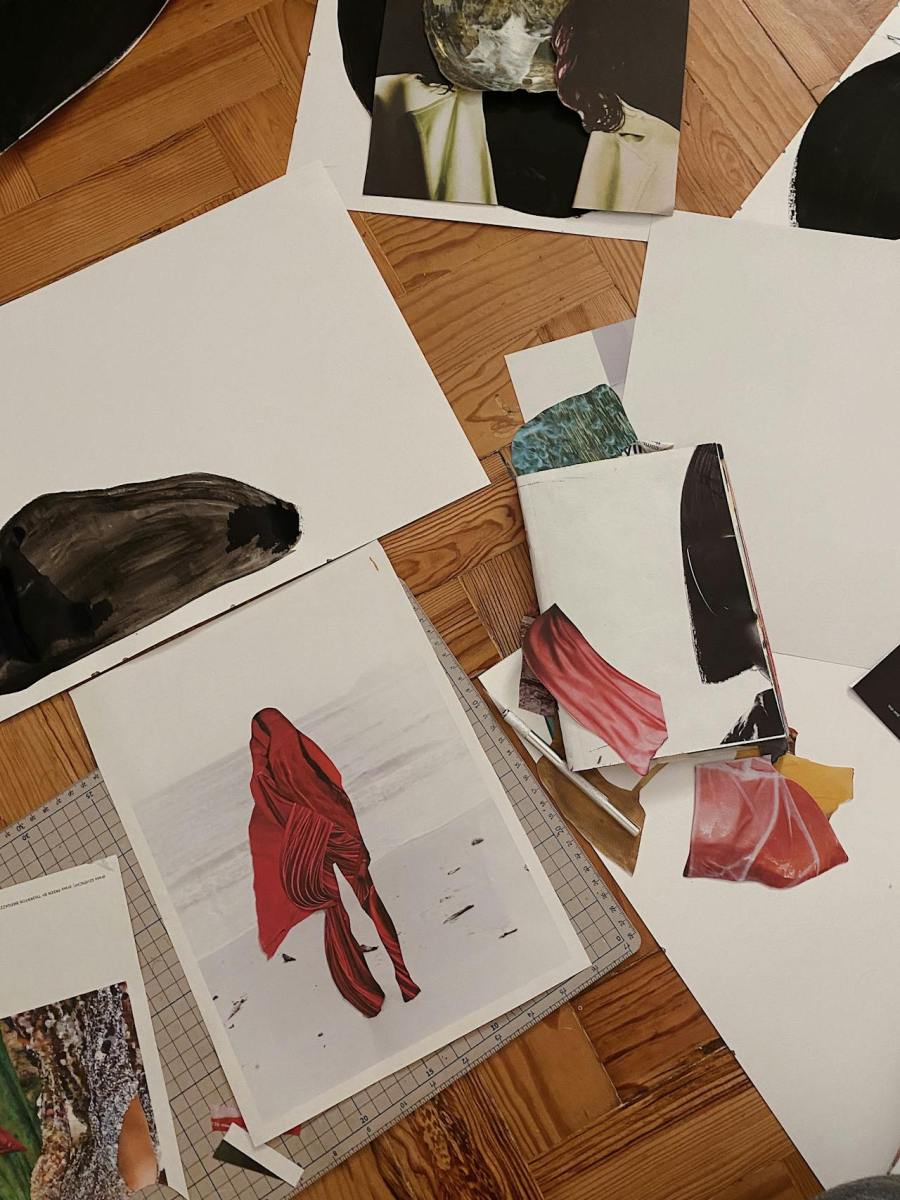Now look, I’m not saying we should start donning pasta necklaces at our office jobs (unless you want to of course!). However, there is a case to be made for revisiting the crafts we did as children, and not just for nostalgia’s sake. All of these crafts have low barriers to entry in terms of initial skill level and finances required, making them great options to dip your toes back into your creative side.
Read: How much is your craft hobby costing, and three ways to save
It’s important to note that any effort and engagement with crafting (or making art generally) is worthwhile and something to be proud of. Especially for those of us who haven’t made anything since our school arts classes. Try not judge yourself by your result, but by the process instead. Did you enjoy it? Which aspects appealed to you? Was it an exercise in being present, if nothing else? Remember that in the art world, we often see artists’ highlight reels after years of honing their practice. There should be no shame in having a go, daggy results and all. You’ll likely surprise yourself.
Jump to:
Collage
Simone Esterhuizen, a collage artist and co-founder of the Melbourne Collage Assembly, speaks to ArtsHub about her craft. On the benefits of collage, she says, ‘There’s a meditative aspect to collage: the act of putting away your phone, putting on some good music and spending a few hours poring over old materials, selecting elements you like and arranging these in several ways until you’re happy with the outcome.’

To get started, you’ll need scissors/a scalpel, a cutting mat and materials. Starting with a colour or shape in mind provides a strong foundation to guide your practice. Esterhuizen also suggests using mixed media in your collages, such as painting or illustration. For many collage artists, she says there is a lot of joy in sourcing materials from bookstores and vintage markets, and building a rich archive of resources. ‘Many of [the Melbourne Collage Assembly artists] have archives of over 1000-plus magazines from the 1930s onwards and each of us usually has a style of vintage print we are continually trying to source.’
Esterhuizen and the Melbourne Collage Assembly’s tips for those new to collage are:
- Don’t be afraid – cut into your material to get interesting shapes and outcomes … you’ll become bolder with hacking into your “good stuff”, which is where the magic happens.
- Start with a hero or starter piece – this a good way to get past roadblocks, as a hero piece sets the tone for the rest of the collage.
- Look at the scraps, turn them over, consider them – less is more, and sometimes what is left out is more evocative. For example, cuttings of half a hand or a fragment of a face tend to be more impactful than the complete image would’ve been.
Origami
Perhaps you made a chatterbox to answer your burning questions as an eight-year-old, or maybe you went straight to folding the much-loved crane. Either way, origami is a great craft to test the waters with, as you get a clear-cut sense of completion with each piece.

Fold a zoo of animals or a collection of crystals, or string together some paper crane chains. Or perhaps a bouquet of flowers suits you better? I enjoy making hearts and chrysanthemum flowers to stick onto cards for friends and family. In a world of underwhelming and overpriced birthday cards, adding my origami pieces to plain paper cards can be a nice touch.
Read: Craft hobbies you may have overlooked
Find some origami paper that appeals, and use the array of online resources available to get underway. Your local library may have physical origami guide books too. From pictured step-by-step tutorials, to guided walkthrough videos, your learning style is accommodated in the world of origami. Beginner friendly pieces I recommend starting with are the crane, lotus flower and a samurai helmet (this one makes a great bookmark too!).
Play dough sculptures
Similarly to collage, if you prefer to make up your own rules, sculpture is a great choice. Unlike origami guides, which will punish you for skipping a step, you can sculpt whatever your heart desires and the laws of gravity will allow. Ideas include still-life food scenes, landscapes and animals. Reference images can prove handy as well.
If you don’t feel like hitting up the kids’ toy section to buy branded play dough, there are recipes available online using basic kitchen ingredients. Add some food dye to your batches and you’ll be crafting away in no time. If you feel like committing, I encourage you to visit your local craft shop for some modelling clay, which will be more reliable at holding its shape.
Honourable mention: colouring-in books

While not strictly a craft, adult colouring books have gained traction within recent years, as a way to practise mindfulness and reduce stress. Experimenting with colour and shade between the lines may provide the launchpad you need to build confidence in your artistic abilities, before graduating to free drawing. Colouring books are readily available at bookstores these days, so there’s bound to be an option that appeals.
If it’s been a while since you’ve been in touch with your creative impulses why not explore our series on The Artist’s Way to assist you in rediscovering your inner artist? Week by week Rochelle Siemienowicz follows Julia Cameron’s groundbreaking book and invites readers to undertake a creative journey of discovery with her. You can start from the beginning or jump in at any time. There’s also a Facebook community group you can join.




